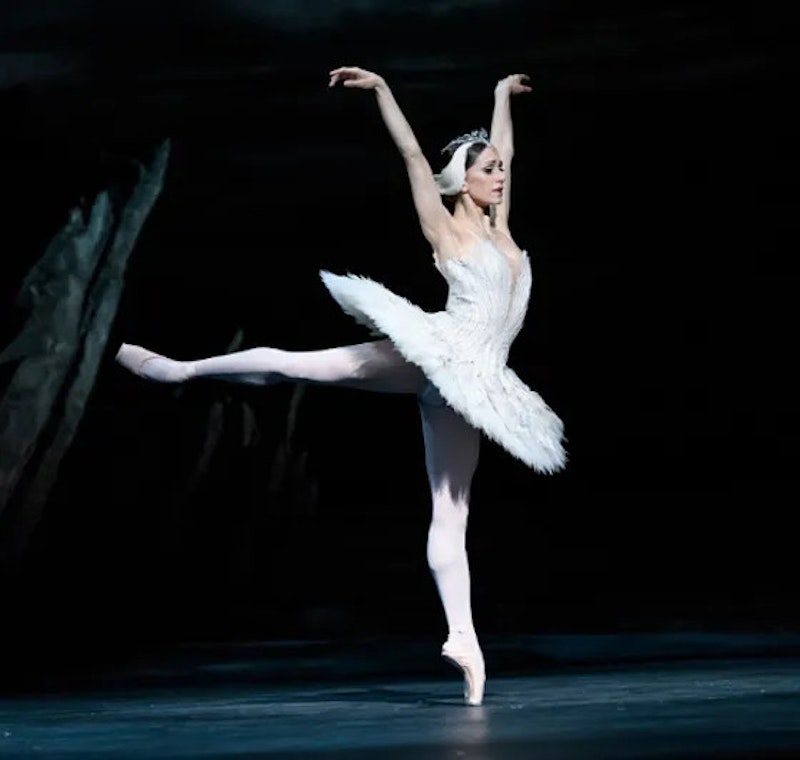When I was a child we had the book Nijinsky by Richard Buckle. I’d look at the photos of Nijinsky, the so-called “the Clown of God,” and read about his capacity to transform into completely different characters, his scandalous choreography for The Afternoon of a Fawn, The Rite of Spring and Jeux, the lighter-than-air quality of his jumps where he hovered in the air and his descent into madness. Diaghilev, the impresario of the Ballets Russes made the intelligent decision never to let him be filmed dancing. I also was fascinated by his training regime. Nijinsky never walked anywhere, always taking a car because the muscles for walking and dancing are different. I like it when people are radical in what they do.
The first ballet I saw was under spectacular circumstances. In 1984 I was in Athens and saw that Rudolf Nureyev was performing Raymonda at the Odeon of Herodes Atticus Amphitheater on the side of the Parthenon. I recall walking up the hill to the place under the blazing sun, then sitting there while at a distance Nureyev leapt and bounded around the stage. It was an unusual experience, but I wasn’t equipped to enjoy it.
The next ballet I saw was Swan Lake in San Francisco. I had no connection to it for again, I’d no real understanding of what I was watching. I did like seeing the array of swans moving in choreographed unison under the dim blue light. The bodies of dancers are beautiful, like ambulant Greek sculptures.
When I first moved to Paris one of my neighbors was a technician at the Paris Opera. He knew I liked music and art so he invited me behind the scenes. It was unforgettable. In the hallway I briefly met Jerome Robbins and Patrick Dupont, who was at the time the Opera Director and one of the greatest modern French dancers. My friend showed me the upper decks where the props were hanging. The evening’s performance started and we went to stage level where Robbins’ choreography to Verdi’s music The Seasons was being performed. I stood just behind the curtain and watched as a star dancer, whose name I never learned, leapt out to center to do his solo. While he was dancing, I was surrounded by the female dancers who clapped their hands in encouragement. Finally he leapt back off stage to thunderous applause and collapsed straight on the floor, gasping for breath, while all the dancers who’d been cheering cleared out to let him recuperate in peace.
It was thanks to YouTube I discovered what ballet is about, which is anything but the by-rote repetition of a series of preplanned moves. By watching different dancers perform the same role I saw the extreme variation in dancer’s styles. At first subtle, with time these differences came to outweigh the fact that the same choreography was performed. Once, while watching versions of The Dying Swan, Mikhail Fokine’s choreography of Saint-Saëns's music, I came across Galina Ulanova, a Russian Prima Ballerina, performing in 1956.
I’d seen other versions but hers was different. Combining fluidity with awkward, rushed and hectic gestures, she expresses the approach of death to an innocent creature; it feels pain but doesn’t understand why it’s suffering. My eyes were opened, Ulanova was speaking with gesture. It happened again while watching Sylvie Guillem, one of the greatest French dancers of all time, perform the Grand Pas Classique in 1988.
Normally presented as a virtuoso showpiece, Guillem transforms it into an exposé on what it means to be young, alive and inhabit a physical body. Recently I was watching a new dancer at the Bolshoi Ballet, Elizaveta Kokoreva, danceGiselle, the first Romantic ballet.
Hypnotic in her grace, in the famous scene, in which Giselle learns she’s been deceived in love and goes insane, there’s a moment in Kokoreva’s solo when she’s fallen to the ground. When she rises, her head is resting tilted, on her shoulder, while she’s staring forward. This gesture expresses hopelessness, disillusion and the loss of personal will.
Ballet is based upon the establishment of a normative state into which exceptional events are introduced, like tossing pebbles into a stream. Whether a solo, a pas de deux, trois, etc., one starts from a sort of equilibrium into which elements are introduced to disturb it. From this disturbance Idea arises. It’s gestural philosophy and, when it successfully occurs, we feel in contact with physical truth.

